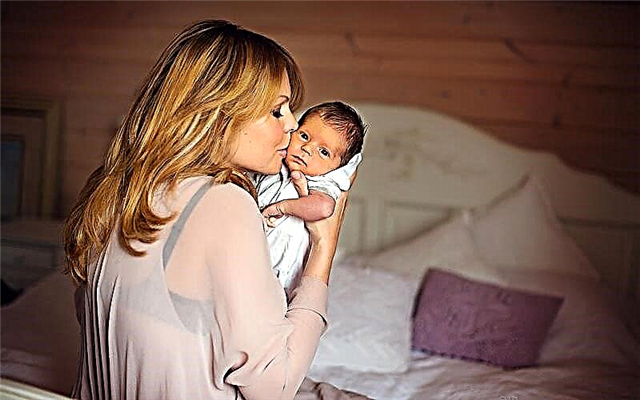
One of the main ways to help your child with high levels of acetone in urine and blood is to follow a certain diet. Let's figure out how to feed a baby with acetonemia, what foods should be given to babies with this pathology, and what dishes are contraindicated.
The principles of lowering acetone
When a child develops acetone syndrome, it is required:
- Stop vomiting.
- Ensure the restoration of the balance of water and electrolytes.
- Give sorbents for the rapid removal of ketones from the body.
- Give antispasmodics for abdominal pain.
- Follow a strict diet.

Nutrition Basics
- With a strong deterioration in the baby's condition, food should not be given at all. Do not worry that the baby will starve. Plus, you can't force a child to eat. On the first day, you can give your baby only some croutons.
- On the second day, it is also advised to give the child a minimum of food. If the condition improves, you can add a baked apple, as well as rice water to crackers and a fairly abundant drink.
- From the third day, give the crumbs porridge, which should be cooked in water for now (it should be well boiled). The child will benefit greatly from the use of buckwheat, corn, and oatmeal. You shouldn't add butter, as well as sugar. If you want to make the product sweeter, you can use homemade jam or honey.
- On the fourth day, we expand the children's diet by adding biscuits and bread. You can also make vegetable puree soup or vegetable broth. A small amount of vegetable oil is acceptable.
- If the condition improves from the fifth day, it is allowed to give boiled chicken or veal, as well as natural and fresh dairy products.

Liquids
Drinking for a child with acetone in the blood and urine must be abundant. At the same time, it is important to prevent recurrence of vomiting, so all liquids are given in small portions, for example, a tablespoon every 15 minutes.
With an increase in acetone in the blood, the child needs a sweet drink. It is best to give your baby a concentrated glucose solution right away. Prepare the infusion of raisins for the child by pouring a tablespoon of raw materials with a glass of boiled water.
Why, with an increased content of acetone in the urine and blood of the child, it is necessary to replenish the reserves of glucose, see Dr.
In the early days of illness, you should also give your child electrolyte solutions, such as rehydron, to drink. In addition, give your baby still alkaline mineral water and dried fruit compote.
From the fourth day of the disease, you can give the toddler juices from fruits or vegetables (dilute with water), homemade fruit drinks and fruit drinks, as well as tea (weakly brewed). Remember that tea has a diuretic effect, so your child should also drink a glass of water with each cup of tea.
Drinks for a sick baby should not be ice cold or hot, so as not to irritate the mucous membrane of the digestive tract, and also not to increase vomiting. It is best to give the little one liquid at room temperature. The total volume of liquid per day is calculated by the weight of the baby - 120 ml of drink is needed for each kilogram.

Recipes
Vegetable and rice soup
Peel two potatoes and chop finely. Chop the peeled carrots and 1/4 onion. Put vegetables in boiling water (500 ml) and salt a little. After 15 minutes, add two tablespoons of washed rice grits to the soup. After letting the dish boil for another 15 minutes, turn off the heat and let it brew for 5-10 minutes.
Oatmeal with apple and pear
Bring 200 ml of water to a boil, add oatmeal and cook over low heat. While the oatmeal is cooking, cut the pear and apple into small pieces, add to the porridge and stir. If desired, you can add a little low-fat milk and a spoonful of honey to the dish.
Turkey with vegetables
Cut the turkey fillet into small pieces, place in a cauldron, pour in a little water, add a pinch of salt and, covering with a lid, simmer for about 20 minutes, stirring occasionally. Then add broccoli cabbage, chopped carrots and one onion to the cauldron. Cook until all ingredients are tender. For a small child, at the end of cooking, the dish is ground in a blender.
Baked apples with honey
Take a few apples, cut them into halves and remove the middle. Place some honey in each half of the fruit and cook the apples in the oven for 10-15 minutes.

Diet after acute symptoms
Although symptoms will go away in a few days with proper treatment, a specific diet should be followed for another 2-3 months. It should be based on the following products:
- Porridge made from buckwheat, corn, pearl barley, oat and wheat groats. Make them runny.
- Dairy and fermented milk products. Buy only fresh products for your child with a maximum of 5% fat and no added sugar.
- Soups that are cooked in vegetable broths.
- Lean meats - Use turkey, rabbit, chicken, or veal for your meals.
- Sea fish - prepare cod, pollock, blue whiting, hake, flounder dishes for your baby.
- Baked, raw and stewed vegetables - prepare carrots, zucchini, pumpkin, different types of cabbage, potatoes and others for your child.
- Berries and sweet fruits, as well as dried fruits.
- Boiled eggs - up to one per day.
- Some nuts.
- Homemade sugar-free compotes and fruit drinks.
- From sweets, it is permissible to moderately give marmalade, honey, jam, marshmallow or caramel.
Meals should be fractional, with breaks for 2-3 hours. Dinner should not be plentiful - it is best to give your baby a small snack at 7 pm, and at night limit yourself to a glass of kefir or fermented baked milk. All food is recommended to be baked, boiled, steamed or stewed. It is worth making soufflé, meatballs and meatballs for the baby from meat and fish.

Sample menu
Due to the large restrictions in products and the small list of permitted dishes, it can be difficult to compose a menu for a baby who is recovering after a rise in acetone in the blood. We offer a sample meal plan for a week, which needs to be adapted to the preferences of your child:
Please note that Dr. Komarovsky considers the basis of treatment solely to replenish glucose reserves in the child's body. See the next video for more on this.
How to replenish the first aid kit?
If the baby has had at least one acetone crisis, the following drugs should be kept in the home medicine cabinet:
- 40% glucose solution (ampoules) - the famous pediatrician Komarovsky calls this form of glucose the best option with acetone in the blood.
- Vials with glucose 5% or 10%.
- Glucose tablets.
- Powders for the preparation of electrolyte solutions - rehydron, humana electrolyte, oralit and others.
- Nicotinamide - This vitamin helps glucose to be absorbed faster.
In addition, dried fruits and still mineral water should always be available at home.

Prohibited foods
A strict diet in an acetonymic crisis is primarily caused by vomiting and dehydration. For the period of treatment, the menu of a child with acetonemia should not include:
- Soups based on meat or bone broth.
- Fatty meats, offal, very fatty fish, canned meat and fish, smoked meats.
- Fatty as well as sweet fermented milk products.
- Sour fruit.
- Vegetables such as tomatoes, peppers, and eggplants. Rhubarb is also contraindicated for children with acetone, as well as sorrel, parsley and spinach.
- Legumes.
- Mushrooms and mushroom broths.
- Industrial sauces.
- Chocolate and other products including cocoa.
- Sweet pastries, cakes.
- Crackers, fast food, chips.
Among the liquids used by the child, there should not be carbonated drinks, store juices, rosehip broth and coffee.




